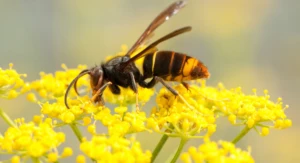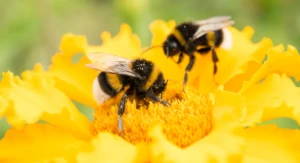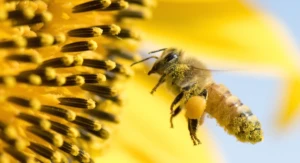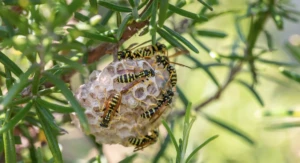Want to get rid of stinging insects near your home? Let us help.
Elimination of stinging insects, including nest removal.
Customized plan for prevention.
Industry experience translated into strategic solutions.
Stinging Insect Control
While many stinging insects are considered beneficial, their innate need to protect themselves can make them dangerous. Typically, their nests are in trees, shrubs, and other protected places throughout the yard. Attics, decks, and sheds can also provide protected and comfortable homes for sting insects. They pose a serious health threat, as stings can result in painful welts that could get infected, and in some cases, they can cause life-threatening allergic reactions. Partner with Terminix Wil-Kil today for any and all stinging insect needs. Our experts are trained to locate and exterminate all types of stinging insects – maintaining the safety of your home.
UNDERSTANDING STINGING INSECTS
TYPES OF STINGING INSECTS
Stinging insects come in various forms, each with its behaviors, habitats, and risks. Understanding their differences can help you identify the pest and take appropriate action.
Wasps
Wasps are one of the most common stinging insects. They typically build their nests around homes in eaves, attics, or crevices. Wasps can be aggressive, especially when their nests are disturbed, leading to painful stings.
Hornets
Hornets are a subset of wasps but tend to be larger and more aggressive. They often build large, paper-like nests in trees or under roof overhangs. Hornet stings are excruciating due to their larger stingers and the venom they inject.
Bumblebees
Bumblebees are usually less aggressive but will sting when threatened. These bees are essential pollinators, often seen in gardens around flowers and shrubs. Their stings can cause swelling and allergic reactions in sensitive individuals.
Honey Bees
Honey bees are critical in pollination, helping plants and crops thrive. Unlike wasps or hornets, honey bees are typically non-aggressive and sting only when threatened. A honey bee will die after stinging, so they only sting as a last resort.
Paper Wasps
Paper wasps build open, umbrella-shaped nests out of paper-like material. These nests can often be found hanging from eaves, soffits, and trees. Paper wasps tend to be less aggressive than other wasps but will sting when their nests are disturbed.
Yellowjackets
Yellowjackets are highly aggressive, stinging insects that build nests in the ground or wall voids. They are particularly dangerous because they can sting multiple times and attack in swarms when their nests are threatened. Yellowjacket nests should be cautiously treated due to the risk of painful stings and allergic reactions.
WHY DO STINGING INSECTS STING?
Stinging insects use their stingers as a defense mechanism. They sting when they feel threatened or when their nests are disturbed. Sometimes, stinging insects like wasps and yellowjackets become aggressive near food sources, especially sugary or sweet items. It’s essential to keep food covered outdoors and avoid swatting at these insects, as aggressive behavior can provoke them to sting.
IDENTIFYING STINGING INSECTS
Proper identification is key to safe and effective stinging insect control. Look for physical characteristics such as the size and color of the insect, the shape of their nests, and where the nests are located. For example, yellowjacket nests are often found in the ground or hidden in wall voids, while paper wasps build exposed nests hanging from eaves. If you are unsure of the insect species, contact a professional pest control company for assistance.
RISKS AND DANGERS OF STINGING INSECTS
HEALTH RISKS
The stings from wasps, hornets, and yellowjackets can cause severe pain, swelling, and redness. In some cases, people may have allergic reactions, leading to symptoms such as hives, difficulty breathing, or even anaphylaxis. It’s important to seek medical attention if someone shows signs of an allergic reaction after being stung. Bee stings can be particularly dangerous for those allergic to their venom.
PROPERTY DAMAGE
Stinging insects can damage your home and property. For example, wasps and yellowjackets often build nests in wall voids, attics, and other hidden areas, leading to structural damage over time. Paper wasps create nests from a material similar to paper, which can accumulate in large amounts and cause damage to soffits and eaves.
ENVIRONMENTAL IMPACT
While some stinging insects like honey bees and bumblebees are vital pollinators, others can be detrimental to your environment. Bees help pollinate plants, supporting local ecosystems. However, aggressive species like hornets and yellowjackets can disrupt outdoor activities and pose a threat to wildlife, pets, and people.
PREVENTION AND CONTROL METHODS
PREVENTIVE MEASURES
Preventing stinging insect infestations starts with taking proactive steps around your home. Begin by sealing any entry points, such as windows, doors, and soffits, to keep insects from getting inside. Regularly check areas like eaves, shrubs, attics, and crevices for early signs of nests and remove potential nesting sites.
To avoid attracting insects, especially yellowjackets and wasps, keep food and sugary drinks covered outdoors, as these pests are drawn to sweet substances. Additionally, maintaining your landscape by trimming overgrown shrubs and trees can discourage insects from settling in.
DIY CONTROL METHODS
While DIY methods may seem appealing for minor infestations, handling stinging insects like wasps, hornets, or yellowjackets can be dangerous, especially if they become aggressive. Insecticides and traps may help in minor cases, but removing nests or dealing with larger colonies should be left to professionals. Attempting to remove nests without the proper training and equipment can result in severe stings and escalate the situation.
For reliable and safe solutions, contact the experts at Terminix Wil-Kil for residential pest control. Our trained technicians will assess the infestation and provide a tailored pest control plan to eliminate the problem and protect your home. Skip the risks of DIY and trust the professionals to handle stinging insect infestations efficiently and safely.
NEED HELP WITH RESIDENTIAL PEST CONTROL IN YOUR WISCONSIN HOME?
If you’re dealing with a stinging insect infestation in your Wisconsin home, don’t wait until it becomes a bigger problem. Our expert technicians are trained to safely and effectively handle all types of stinging insects, from wasps and hornets to yellowjackets and bees. Whether removing a nest from your attic or dealing with yellowjacket nests in your garden, we’ve got you covered.
We offer customized pest control plans that suit your home’s needs and protect your family from painful stings and property damage. Contact us today for a free estimate and take the first step toward a safer home.
Give Us A Call Today!
800.236.8735FAQS
Customer Reviews
Stinging Insect Control in Sun Prairie, WI
Terminix Wil-Kil Pest Control is a local Pest Control and Extermination company helping homeowners and businesses with pest issues across WI.








